It is not uncommon for us to hear “we are trying to determine the value in considering your proposal”. Well, there are a number of factors to consider in a professional outdoor lighting design and installation to illuminate the architectural features of your home, landscape and outdoor living areas. These would include the quality of the product, the experience of the company, the professionalism and workmanship of their designers and installers, the warranty and perhaps the most important, the skill and artistic ability of the outdoor lighting designer. Comparing price from company to company is very difficult, and almost impossible to come up with a true “apples to apples” comparison. The Landscape Lighting Designer’s skills are the most difficult to measure.
From my own vantage point, landscape lighting design is learned from multiple sources. These include formal and informal education, conferences, seminars, trade shows, seeing other professionals’ work, and many years of actual hands-on experience in doing outdoor lighting design. There is a lot to proper landscape lighting design and many factors to consider in creating a subtle and elegant night scape.
Desired effect and the objects to illuminate help me to determine the appropriate lamp or LED to select. One needs to understand the customer’s goals and objectives, their taste in lighting, the objects to illuminate, required beam width, required beam distance, color of the light output and the desired effect in order to determine the appropriate lamp to use. Once the light sources have been determined, then the appropriate fixture or fixtures can be selected to achieve the best outdoor lighting effect. The following two photos show good and bad comparative lighting effect. Notice in the example on the left, lights were placed in front of the windows, throwing light into the home. Peaks of the home were ignored and dark. The far left corner of the home seems to be nonexistent. The project on the right was designed by Outdoor Lighting Expressions. Notice how the areas outside the windows are lit and not the windows themselves, the smooth transition of light from one area to another, as well as illumination reaching the upper peaks.
The photo on the left is an example of poor lighting design and amateur skills. The home on the right is an example of proper lighting design, and a demonstration of the value a good, professional lighting designer can bring to the project.
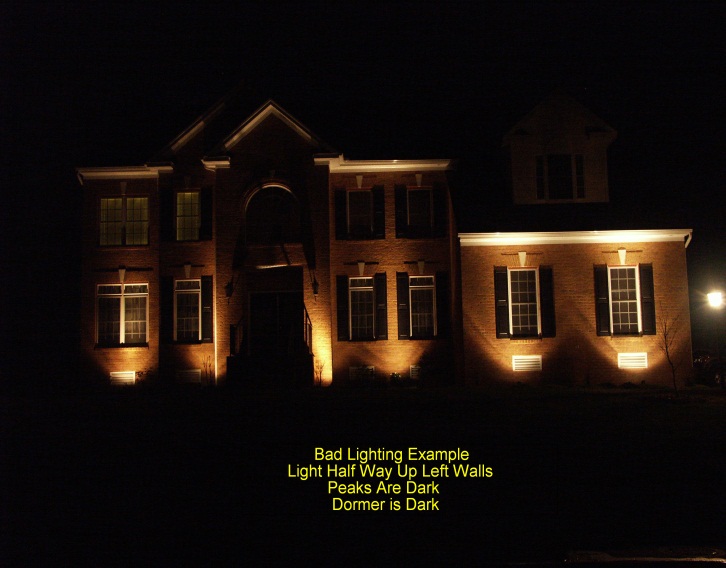
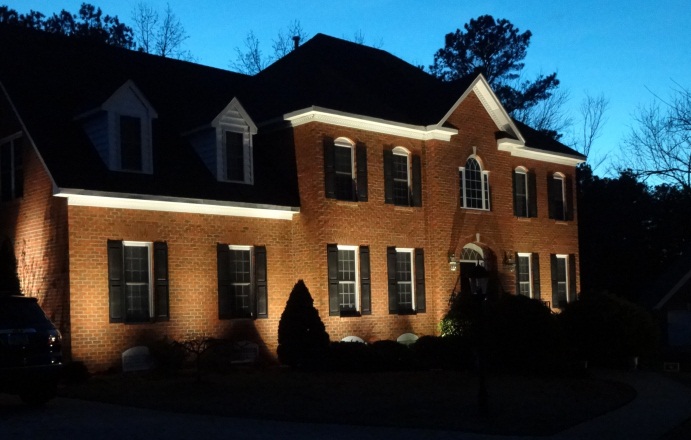
Next is the fixture placement. If you are illuminating the architectural features of the home, one should focus on the interesting architectural features of the home, such as columns, peaks, corners and not lighting up windows, which results in throwing a lot of light into the home. Architectural accent lighting focuses on the home’s features whereas flood lighting illuminates almost every aspect of the home with lots of light infiltration into the home. We typically advise against flood lighting. Notice how the columns and peaks of the home below are well illuminated.
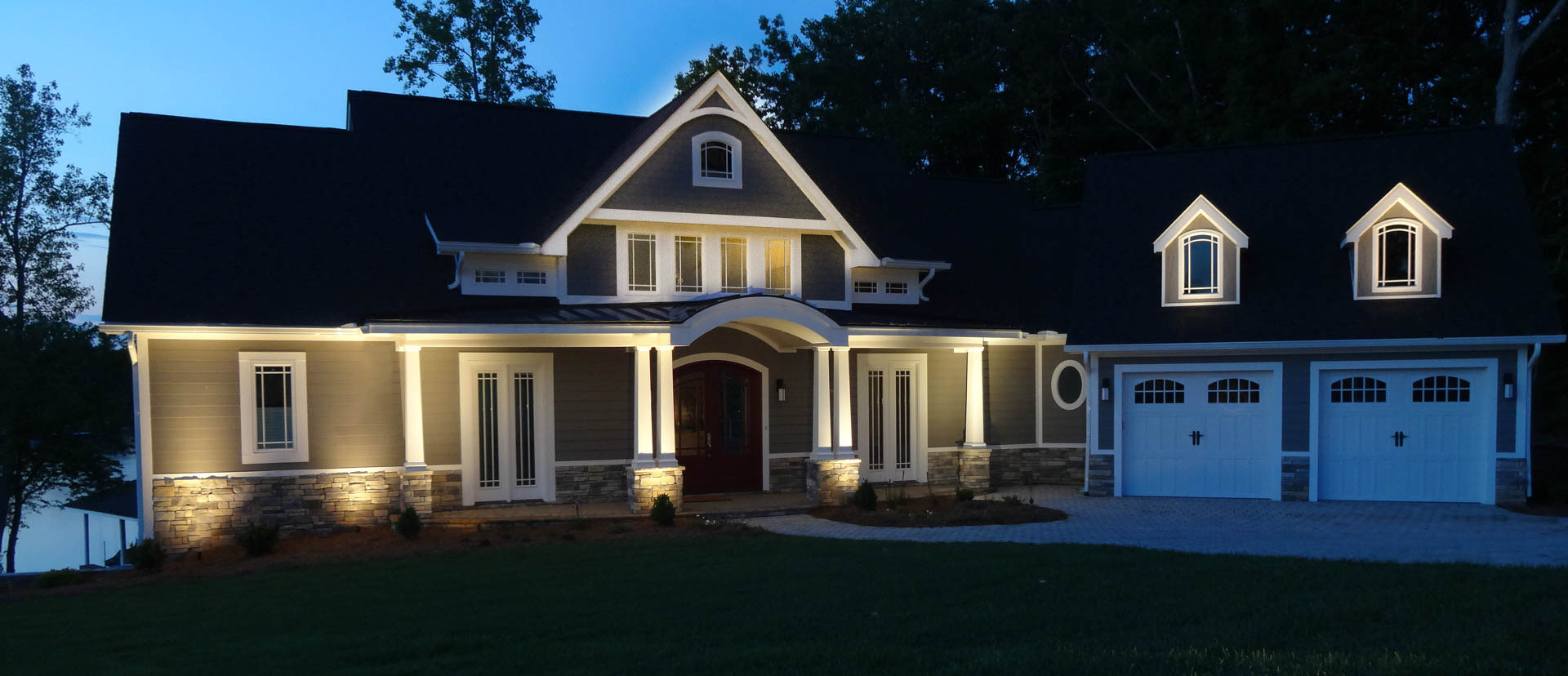
This project was accomplished by picking appropriate LEDs including wide floods and narrow spots of different wattages and strategically placing the lighting fixtures to achieve the desired effect.
Illumination of trees is also done very poorly by many inexperienced in lighting design, such as placing the fixture too close to the trunk of the tree which ignores illuminating the canopy of the tree. Many times by only using one light, the tree is lit on one side even though the tree can be seen from both sides. And trees with large canopies can sometimes require as many as three to four lights to illuminate the entire canopy of the tree. In the example below, each tree has two lights on the tree to maximize the effect of the landscape lighting.
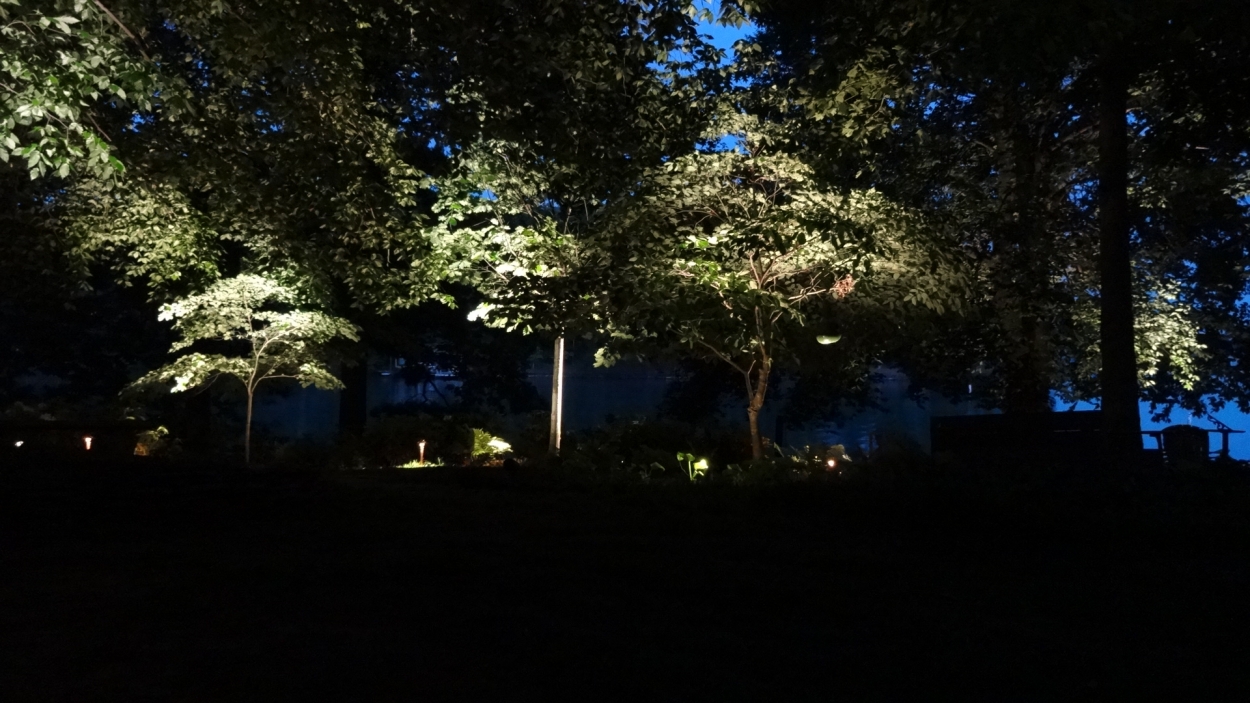
Walkways are another common problem area with some lighting designers. It should be simple enough and one should know that you should not be able to see the light source on the path lights and to also avoid the runway-type of effect, The lights should be evenly spaced and staggered from side to side if and when possible. In these examples, the photo on the left is a good example of proper walkway lighting. The photo on the right shows poor fixture selection and placement.
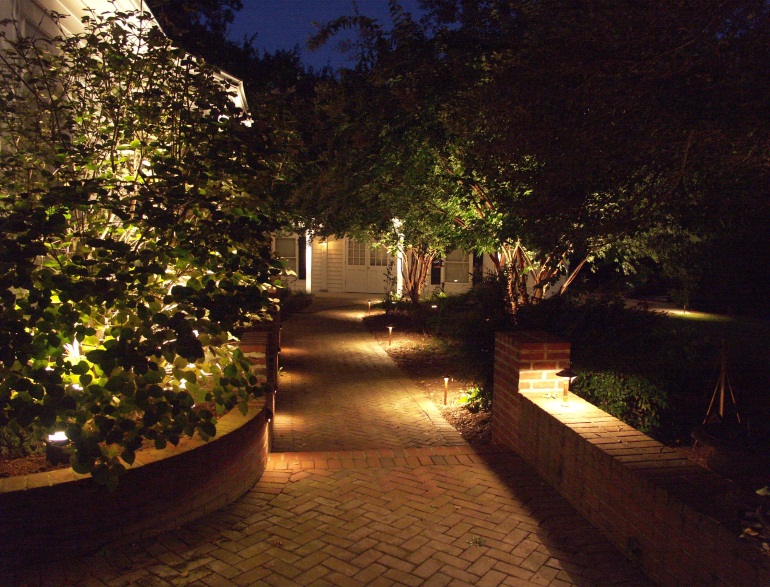
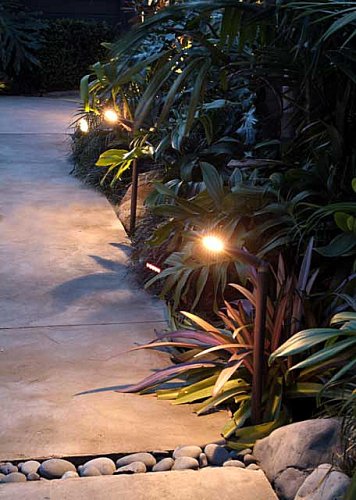
Outdoor Lighting is an art form and if designed properly should create a beautiful, soft and subtle lighting effect. Smooth transitions, little if any light source visible, proper color temperature of light output and all interesting features properly illuminated. Only a professional outdoor lighting designer fully understands these principals.
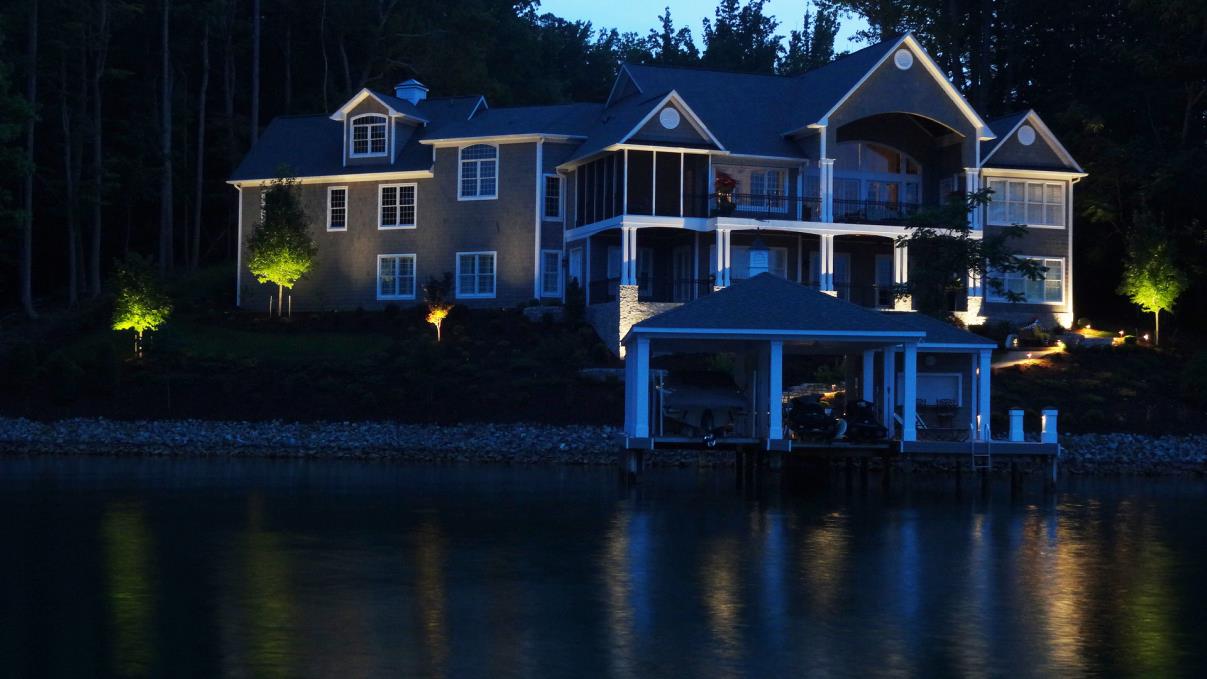
These are just a few elementary examples of what a skilled, artistic and experienced landscape lighting designer can bring to your outdoor lighting project and the value incorporated in their proposal.Our experience in landscape lighting has shown that cheaper is not better. You get what you pay for, and the skills and artistic ability of the Outdoor Lighting Designer can make or break the end result of a landscape lighting project. The old saying of “The bitter taste of poor quality lingers long after the cheaper price is forgotten” is very true in our business.
Thank you for visiting our blog. If we can be of assistance now or in the future, please contact us at Outdoor Lighting Expressions.

